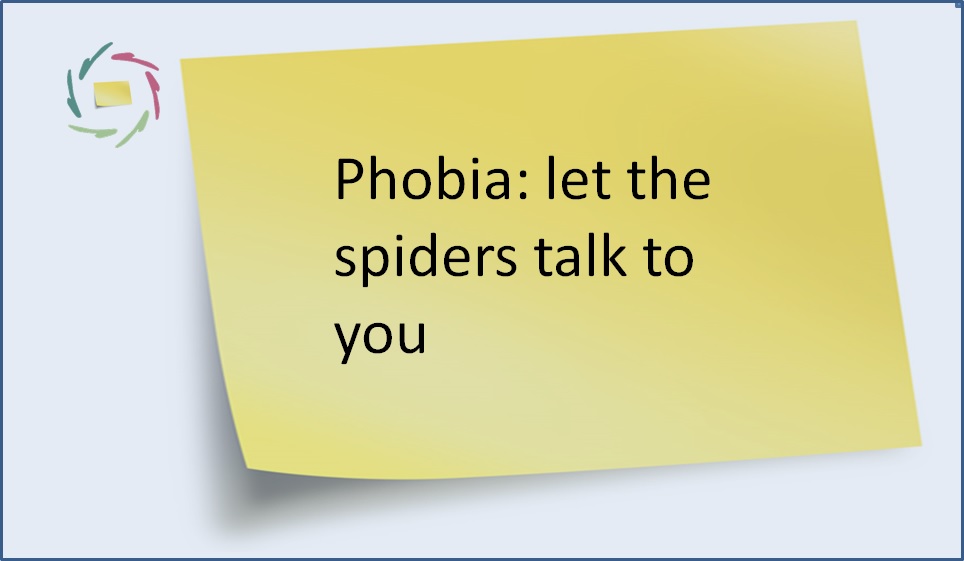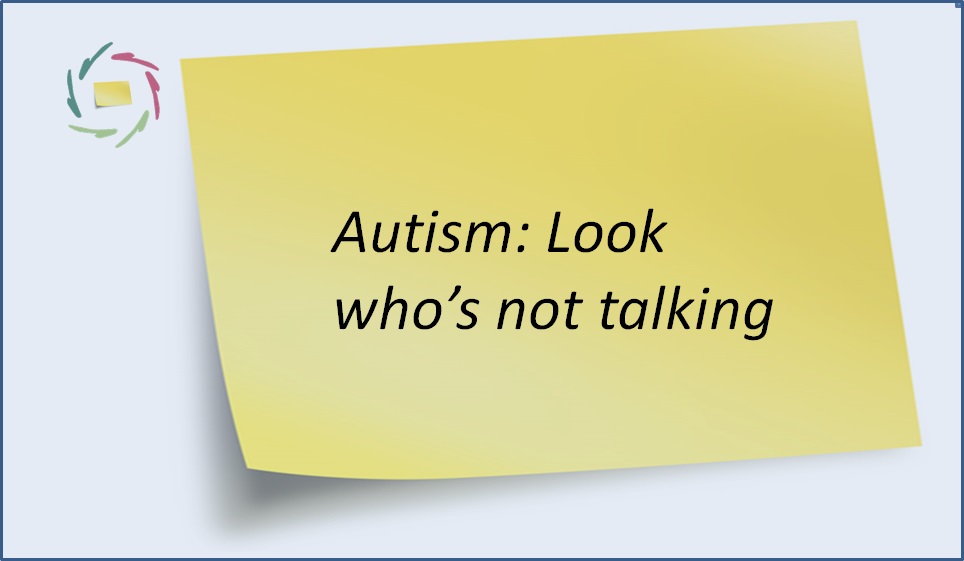6. Phobia: let the spiders talk to you

If you have a phobia for spiders and you go to a therapist, there’s a big chance that he will subject you to a ‘systematic desensitization’. This is: you are gradually brought into contact with ‘spider’ until you can stand its presence or even touch the real thing. Simple procedure, no? And doesn’t it work? Just like that.
◊◊◊
Of course, your phobia itself is not generated by the spider. As with any fear/anxiety, this phobia exists inside you, not outside you. The spider is not inside your brain. The perception of spider is. Your phobia, in short, is generated by your perception of the spider.
◊◊◊
Well then, the question is important: is the phobia somewhere hidden inside a well circumscribed part of your brain (mind)? Or is it part of the way you are as a total person? In the first hypothesis, a plug-and-play change of this faulty part is possible and recommended. Someone else could do this for you, or almost. In the second hypothesis however, not so. Here, a growing-beyond is very clearly the only really worthwhile solution. Now, this is a totally different matter of course. You have to do this very much yourself. The help you can get for this is also of a completely different nature. You see: these are completely different points of view, with very different consequences.
◊◊◊
According to me, the second hypothesis is true. After all, human mind is nature’s product, not a technical product. This, together with its extreme complexity, makes it almost impossible for something like a phobia to exist as a distinct part, unrelated to the rest of mind. In the real world, mind is not a clockwork-like device.
◊◊◊
This means that you can best evolve beyond the phobia through changing as a total person. You do this inasmuch as you ‘let the spider talk to you’, whether or not you are involved in a systematic desensitization process. This means: let its meaning become clear to you in a natural way, by itself. You have the possibility to accomplish this. This means: not getting rid of it, but letting it ‘organically’ transform itself and you. Give it the energy and the support that are needed for this. A plug-and-play change is not enough.
◊◊◊
Use autosuggestion.
◊◊◊


